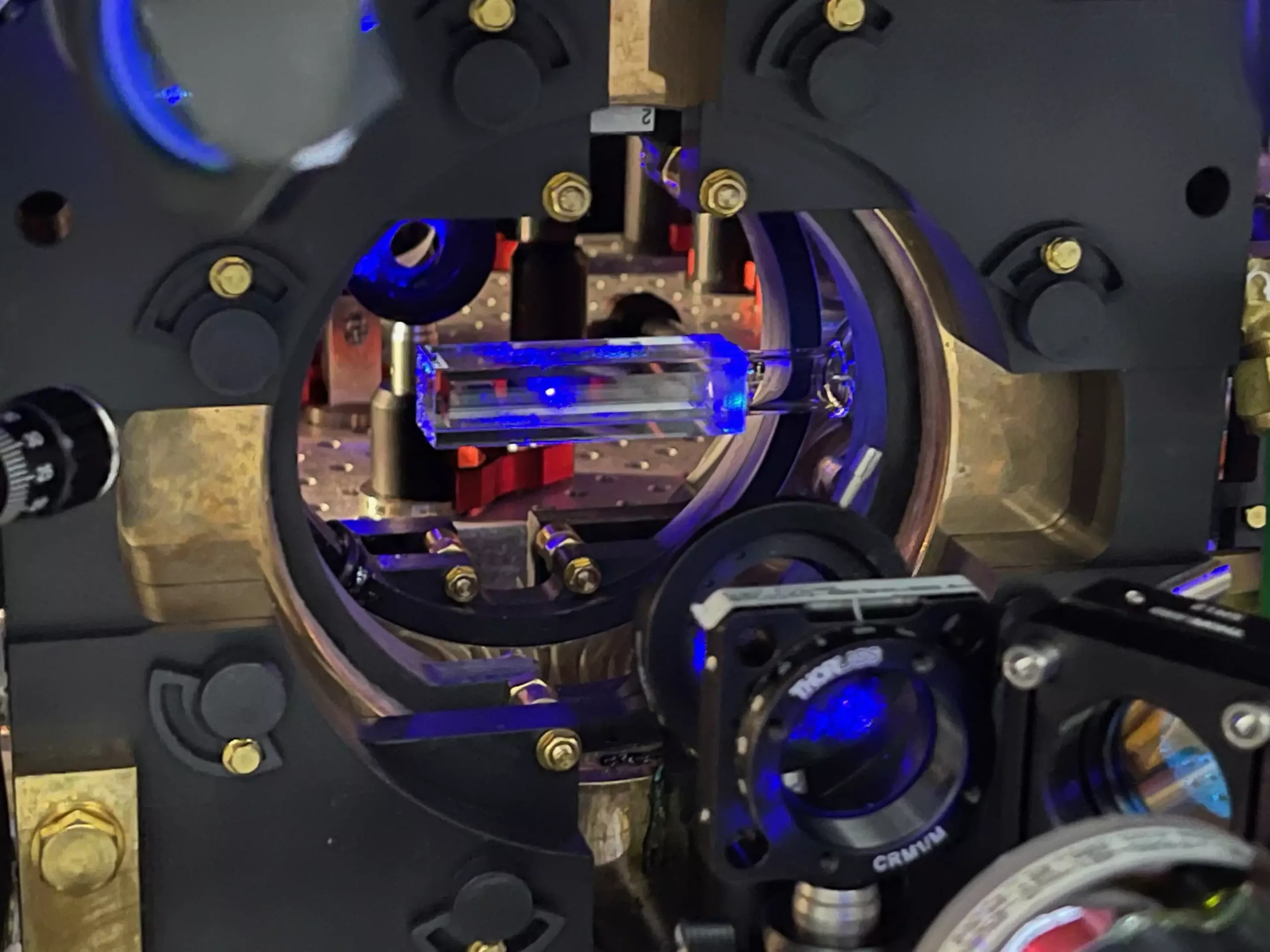Quantum physics has been at the forefront of scientific research, pushing the boundaries of our understanding of the universe. In recent years, high-precision sensing techniques have become essential for delving deeper into the microscopic properties of materials. Quantum-gas microscopes have emerged as powerful tools for studying quantum systems at the atomic level, providing high-resolution images of quantum gases and allowing for the detection of individual atoms.
A group of researchers from ICFO in Barcelona, Spain, led by ICREA Professor Leticia Tarruell, recently introduced their own quantum-gas microscope named QUIONE after the Greek goddess of snow. This unique instrument is the only one in the world capable of imaging individual atoms of strontium quantum gases, making it a groundbreaking development in the field of quantum physics. The team’s research, published in the journal PRX Quantum, highlights the importance of quantum simulation in unraveling complex systems that remain beyond the reach of traditional computers.
What sets ICFO’s strontium quantum-gas microscope apart is its ability to bring strontium gas to the quantum regime, place it in an optical lattice for atom interactions, and employ single atom imaging techniques. While previous microscope setups used alkaline atoms with simpler optical properties, strontium’s unique features offer a wealth of possibilities for quantum computing and simulation. Strontium atoms can serve as an atomic quantum processor, potentially solving problems that current classical computers cannot tackle.
The researchers at ICFO meticulously lowered the temperature of the strontium gas using laser beams, bringing the atoms to an almost motionless state and close to absolute zero temperature. This allowed the atoms to exhibit quantum phenomena such as superposition and entanglement, paving the way for quantum simulation. By activating the optical lattice, the atoms were arranged in a grid-like structure, enabling interactions akin to quantum tunneling. Through single atom imaging, the researchers were able to observe and analyze the behavior of strontium atoms at the quantum level.
In addition to capturing images of individual atoms, the research group used their quantum-gas microscope to confirm that the strontium gas exhibited characteristics of a superfluid, a quantum phase of matter that flows without viscosity. By turning off the lattice laser and allowing the atoms to expand and interfere with each other, the researchers observed patterns indicative of superfluid behavior. This discovery marks a significant milestone in quantum simulation, paving the way for further exploration into complex and exotic materials.
With the successful development of QUIONE and the demonstration of strontium quantum gas properties, the possibilities for quantum simulation have expanded considerably. The addition of strontium to the arsenal of available quantum-gas microscopes opens doors to simulating more intricate materials and predicting the emergence of new phases of matter. Prof. Tarruell emphasizes the exciting prospects that lie ahead in the field of quantum physics, with the potential to unlock novel insights into the fundamental nature of the universe through quantum-gas microscopy.
The creation of QUIONE and the advancements in imaging individual atoms of strontium quantum gases represent a significant leap in quantum physics research. The innovative techniques and discoveries made by the ICFO research team offer a glimpse into the fascinating world of quantum mechanics and its potential for revolutionizing our understanding of the quantum realm.


Leave a Reply